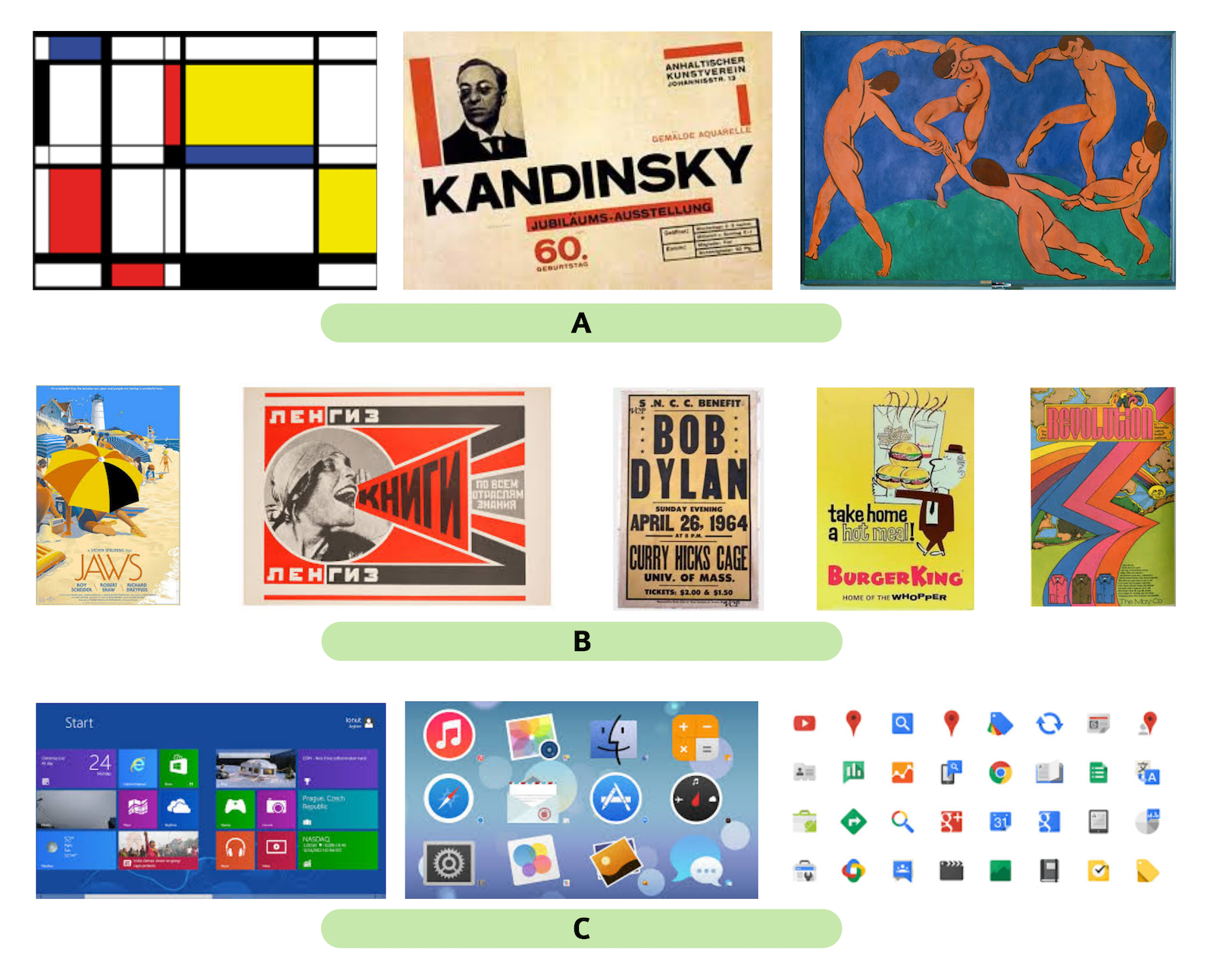Visual, fashion, or automotive design, are prone to waves of trends that tend to sweep the market, dominate it for some time, fade out in favor of new trends, just to return at some point later on as retro fashion, and join the spectrum of general design patterns and vocabulary available to designers.

For example, flat design is in full vogue these days as the style of choice in digital user experience. It is very effective in mobile computing, and its origins can be traced back to the early 2000s.
The attributes of flat design include:
- Two-dimensional illustrations
- Bright colors
- Contrasts and simple geometric shapes
- Large typeface
- Simplified content
The overall effect can be stunning and attract user's attention. Images A1 and A2 are screenshots of award-winning websites that implemented flat design. The imagery is bright, simplified, and contemporary-looking. For some, however, this style of design brings to mind children books illustrations due to the use of similar stylistic motifs, simplified compositions, large types and flat illustrations that don't use perspective.
The popularity of flat design can be traced back to early technical constraints of mobile computing. By the end of the twentieth century, the rapid spread of smartphones, tablets, and other mobile devices required companies to rethink their mobile web presence. Since the mid-1990s, companies have invested in creating engaging web-based experiences for desktop and laptop computers, which now had to fit the small screens of mobile devices.
Visual designers turned to flat design as a technical solution to bandwidth and device size limitations. The file size of flat design graphic images requires significantly less bandwidth than more complex visual imagery, which includes shadings and intricate color gradation. Flat design images also scale well to a smaller screen size because they have fewer details and higher color contrasts. The approach has been so successful that Google, Apple, and Microsoft launched operating systems featuring flat design (see the following image C).

The origins of flat design can be traced back to the turn of the 20th century and the emergence of the Modern, a period of great leaps in science, technology, communications, and commerce, which included the spread of electricity, the telephone, radio, airplanes, cars, skyscrapers, and many other engineering feats. All these development allowed people to experience the world as never before. It was a social cultural generational mindset that sprouted new artistic expressions (see the preceding image A).
The modern sensitivity permeated visual design and contemporary posters, which were the primary channel of public communications, well before television and radio broadcast became wide-spread. Graphic designers created visual experiences for purposes as diverse as social movements and movie advertisements (see the preceding image B)
The flat design we see these days on operating systems, websites, apps, and printed materials across the board has a long history.
